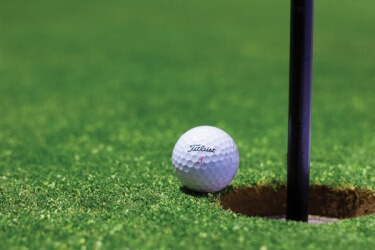Imagery is a psychological performance enhancement technique that allows you to use your senses to “recreate previous positive experiences or picture new events to prepare yourself mentally for performance” (Weinberg & Gould, 2011, p. 294). This technique can help athletes learn new physical and/or mental skills and strategies or improve upon previously attained ones. In addition, it can help an athlete improve self-confidence levels. Research indicates that imagery is a commonly used performance enhancement strategy by successful athletes (Vealey & Greenleaf, 2010). For example, golfer Jack Nicklaus discussed the use and impact of imagery on his preparation for success when he shared:

Before every shot I go to the movies inside my head. Here is what I see. First, I see the ball where I want it to finish, nice and white and sitting up high on the bright green grass. Then, I see the ball going there; its path and trajectory and even its behavior on landing. The next scene shows me making the kind of swing that will turn the previous image into reality. These home movies are a key to my concentration and to my positive approach to every shot (Weinberg & Gould, 2011, p. 293).
Creating effective imagery takes time and effort. Below is a list of five recommended strategies to consider:
1. Create a vivid image.
The most effective images are vivid and clear. Incorporating cues from multiple senses creates vivid, clear images. “Imagery is a polysensory experience that should involve all relevant senses, from visual to auditory, olfactory, gustatory, tactile and kinesthetic” (Vealey & Greenleaf, 2010, p. 269). Descriptive terms that are meaningful and provide an emotional connection should be chosen (Vealey & Greenleaf, 2010).
2. Control your images.
“Controllability is the ability of athletes to imagine exactly what they intend to imagine, and also the ability to manipulate aspects of the images that they wish to change” (Vealey & Greenleaf, 2010, p. 270). Gaining control of one’s images is essential to effective imagery because it allows the athlete to positively change aspects of an image to ensure the outcome is the one desired by the athlete (Vealey & Greenleaf, 2010).
3. Focus on positive images.
Effective imagery uses those images that show an athlete reaching their desired outcome in real time. While mistakes and errors occur the focus should be on positive, desired outcomes. “Imagery can hurt athletes” performance if they focus on the wrong images at the wrong times’ (Vealey & Greenleaf, 2010, p. 277).
4. It’s a learned skill. Practice it regularly and often.
As with any new skill, practice needs to occur regularly to assist with performance attainment. Imagery is no exception. Athletes should engage in imagery daily to become more comfortable tapping into their senses to create a vivid and clear image. In addition, more practice will assist the athlete in developing controlled and focused images (Vealey & Greenleaf, 2010).
5. Create an individualized imagery script.
The saying “One size does not fit all,” applies to effective imagery too. Two athletes hoping to create a similar positive image of themselves successfully accomplishing the same task will develop different images because of the unique meaningful cues and different descriptions that best allow them to connect with their desired skill or strategy (Vealey & Greenleaf, 2010).
Imagery is one example of a performance psychology technique that can be implemented as part of a psychological improvement plan. Following the recommended strategies can assist an athlete with engaging in imagery successfully.
(Editor’s Note: For more information on imagery and other psychological training techniques see the series of articles previously published in pelinks4u authored by Christine Lottes.)
References
Vealey, R.S. & Greenleaf, C.A. (2010). Seeing is believing: Understanding and using imagery in sport. In J.M. Williams (Ed.), Applied sport psychology: Personal growth to peak performance, (pp. 267-304). New York, NY: McGraw Hill.
Weinberg, R.S. & Gould, D. (Eds.). (2011). Foundations of sport and exercise psychology (5th ed.). Champaign, IL: Human Kinetics.
